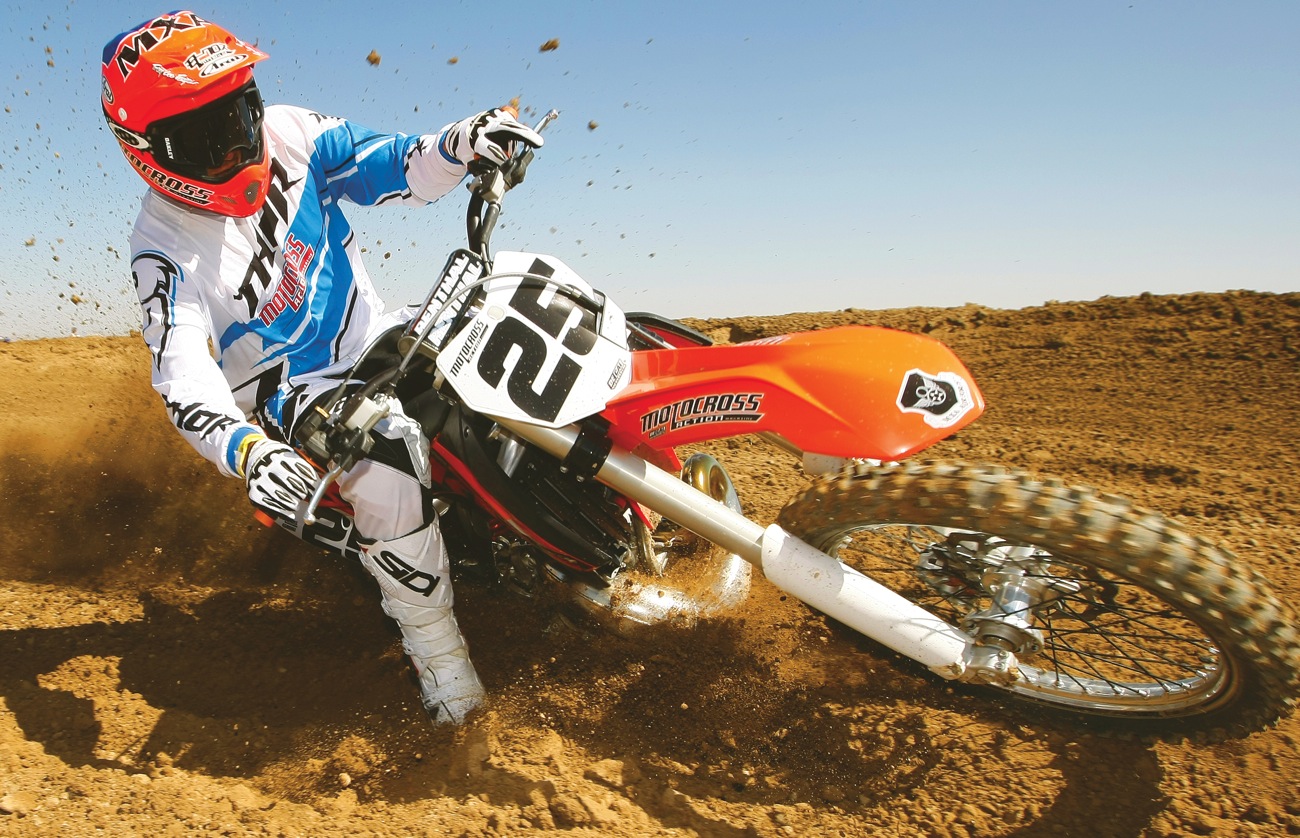ARE 250 TWO-STROKES TOO FAST FOR 250 FOUR-STROKES?
 Legal in Oz, but it can’t drink from the same water fountain.
Legal in Oz, but it can’t drink from the same water fountain.
Motorcycling Australia, Abbott to the AMA’s Costello, will place restrictions on 250 two-strokes in 2015. In Australia 250 two-strokes are legal in the 250 Nationals—and they have been a boon to the class—almost doubling the rider turnout.
But, even though a 250 four-stroke won the 2014 Australian Championship (Luke Clout on a Yamaha YZ250F), the factory team managers wanted the two-strokes banned. Why? Because they were faster, lighter and cheaper than the typical 250 four-stroke. And, while they didn’t defeat the four-strokes for the title, they packed the field as privateers flocked to the easier to maintain and cheaper two-strokes. Thus, the factory teams felt that it was unfair to allow a bike that was faster to race in the same class with their 250 four-strokes. Yes, we know that the same criteria applied to the 250 four-stroke when it was introduced against the 125 two-stroke—but the factories called the shots then also (and they were in favor of the more powerful four-strokes at that time). It’s strange how the promoters could write an unfair rule, like the one allowing four-strokes to have twice the displacement of two-strokes and not see the unfairness of it. But suddenly, it’s totally unfair if an existing machine, in this case a 250 two-stroke, comes on the scene and does the same basic thing to the 250 four-stroke that the four-stroke did to the 125 two-stroke 15 years ago. Obviously, perspective depends on who the check is being made out to.
THE NEW RULES
For 2015 riders can race a 250cc two-stroke in the Australian 250 Nationals, but with these restrictions:
(1) A two-stroke must remain in stock trim from the intake manifold to the exhaust port, and all engine parts between those to points and must be OEM for that year model. That means no porting, reed valves, head mods or aftermarket piston. (That will do wonders for the Australian aftermarket business).

(2) For those looking to change swish (we are pretty sure that they mean “squish”) an extra base gasket will be allowed.
(3) There are no restrictions on pipes or mufflers other than the fact that they must meet the noise rules.
(4) A Motorcycling Australia tech inspector will check engines across the series (and Motorcycling Australia will have each manufacturer supply then with a head, cylinder and piston for comparison).
WHAT’S IT ALL MEAN?
Nothing. Australia deserves praise for allowing 250 two-strokes to compete cc to cc against the 250 four-strokes—and these new restriction will only make 250 two-stroke cheaper to own and race. They won’t hamper the two-strokes in any significant way.
There is no doubt that Motorcycling Australia was stuck between a rock and hard place. They were well aware that two-strokes were the saving grace of a class that was dying in the Australian Nationals and, if they buckled under to the factory requests to ban 250 two-strokes outright, they would be killing the class to satisfy the whiners. So, these new restrictions are salve on the wounds of the four-stroke crowd. Motorcycling Australia can proudly say they did something about the scourge of the two-stroke, while not actually doing anything. Good on you, mate.
Even with the restrictions, the Australian rule is better than the AMA and MX Sports knuckling under to the factories to keep 250 two-strokes under wraps. Oi Oi Oi!





Comments are closed.